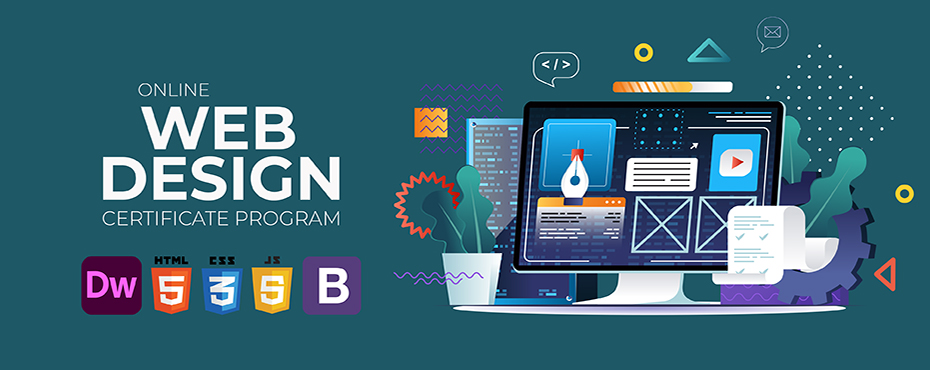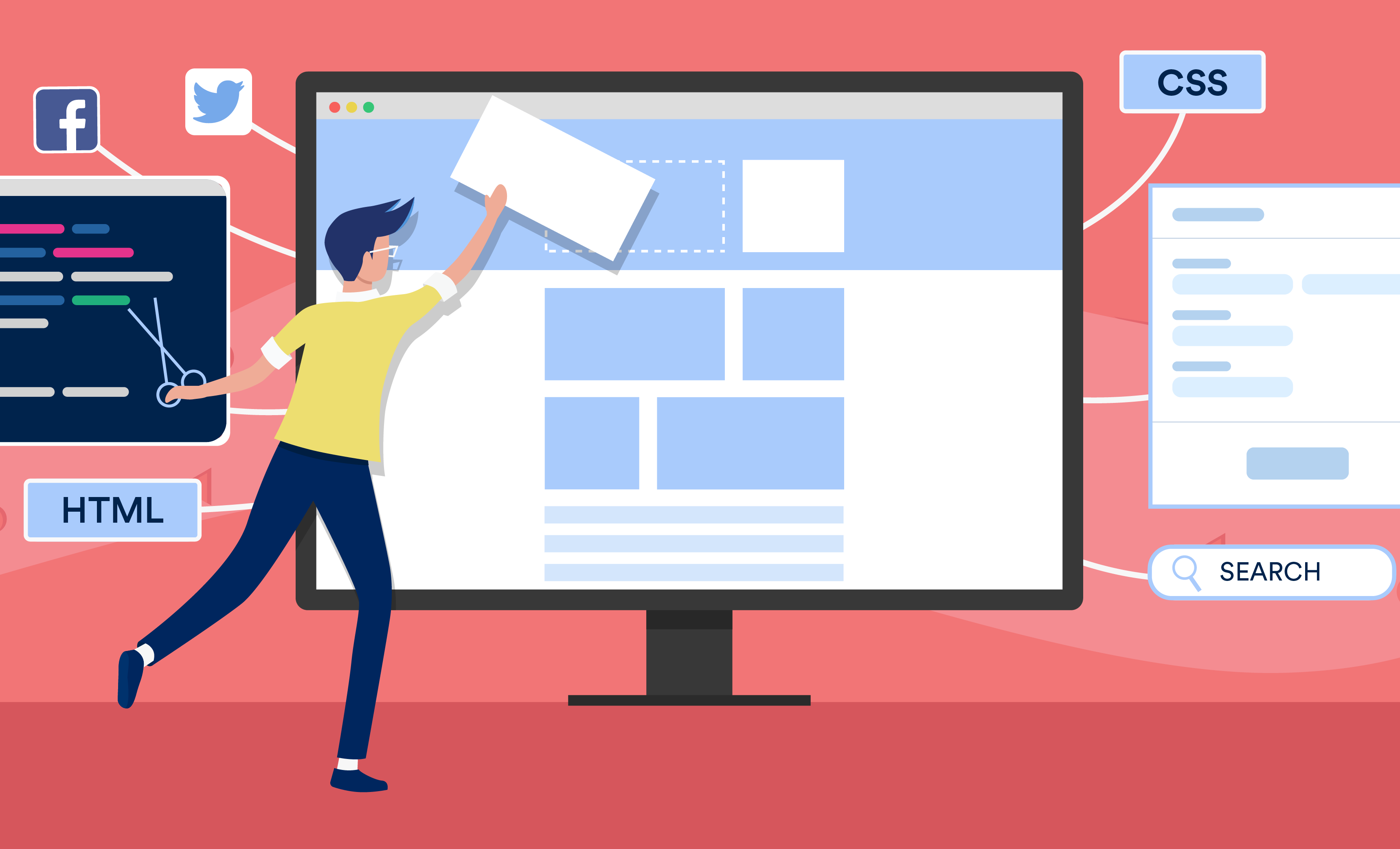All Categories
Featured
Table of Contents
- – Web Design And Applications - W3c Tips and Tri...
- – Responsive Design Best Practices - Google Sea...
- – The Top 10 Most Important Elements Of A Websi...
- – Collaborate & Create Amazing Graphic Design F...
- – Collaborate & Create Amazing Graphic Design F...
- – Web Design And Applications - W3c Tips and Tr...
- – Web Page Design: A Comprehensive Guide - Ado...
- – Responsive Web Design - A List Apart Tips an...
- – Web Design Services - Networksolutions.com T...
- – What Does A Web Designer Do? - Careerexplore...
- – Siteinspire - Web Design Inspiration Tips an...
Web Design And Applications - W3c Tips and Tricks:
Quick summary Usability and the energy, not the visual style, determine the success or failure of a site. Given that the visitor of the page is the only person who clicks the mouse and therefore chooses everything, user-centric style has established as a basic technique for effective and profit-oriented website design - web design frederick md.
and the energy, not the visual style, figure out the success or failure of a site. Given that the visitor of the page is the only person who clicks the mouse and therefore chooses whatever, user-centric design has actually become a basic approach for successful and profit-oriented web design. If users can't utilize a feature, it may as well not exist.
g. where the search box need to be positioned) as it has actually currently been carried out in a number of posts; rather we concentrate on the methods which, utilized effectively, can lead to more advanced design decisions and simplify the process of perceiving presented information. Please notice that you may be thinking about the usability-related posts we've released before: Principles Of Great Site Style And Effective Website Design Guidelines, In order to use the concepts effectively we first require to understand how users connect with websites, how they think and what are the standard patterns of users' habits.
Responsive Design Best Practices - Google Search Central Tips and Tricks:
Visitors look at each new page, scan some of the text, and click on the very first link that catches their interest or slightly resembles the important things they're trying to find. In truth, there are large parts of the page they do not even take a look at. Most users look for something intriguing (or beneficial) and clickable; as quickly as some promising candidates are found, users click.
If a page provides users with high-quality content, they want to jeopardize the material with advertisements and the style of the site. This is the reason not-that-well-designed sites with top quality content acquire a great deal of traffic over years. Content is more crucial than the style which supports it.

Really basic principle: If a website isn't able to meet users' expectations, then designer stopped working to get his job done appropriately and the company loses money. The greater is the cognitive load and the less intuitive is the navigation, the more willing are users to leave the site and search for alternatives.
The Top 10 Most Important Elements Of A Website Design Tips and Tricks:
Neither do they scan webpage in a direct fashion, going sequentially from one site section to another one. Rather users satisfice; they pick the very first affordable alternative. As quickly as they find a link that looks like it might cause the goal, there is a great opportunity that it will be instantly clicked.
It doesn't matter to us if we comprehend how things work, as long as we can utilize them. If your audience is going to imitate you're creating signboard, then style great signboards." Users wish to have the ability to manage their web browser and count on the constant information presentation throughout the website.
If the navigation and site architecture aren't instinctive, the variety of enigma grows and makes it harder for users to comprehend how the system works and how to obtain from point A to point B. A clear structure, moderate visual ideas and easily identifiable links can help users to discover their course to their objective.
Collaborate & Create Amazing Graphic Design For Free Tips and Tricks:

Since users tend to check out websites according to the "F"-pattern, these 3 statements would be the very first elements users will see on the page once it is packed. The style itself is simple and user-friendly, to comprehend what the page is about the user requires to search for the response.
As soon as you have actually attained this, you can interact why the system works and how users can gain from it. People won't use your website if they can't find their method around it. 2. Do Not Waste Users' Perseverance, In every project when you are going to provide your visitors some service or tool, attempt to keep your user requirements very little.
Novice visitors want to, not filling long web forms for an account they may never ever use in the future. Let users explore the website and find your services without forcing them into sharing personal data. It's not affordable to force users to go into an e-mail address to evaluate the feature.
Collaborate & Create Amazing Graphic Design For Free Tips and Tricks:
Stikkit is a perfect example for an easy to use service which needs nearly absolutely nothing from the visitor which is unobtrusive and soothing. And that's what you desire your users to feel on your website. Obviously, Mite requires more. The registration can be done in less than 30 seconds as the kind has horizontal orientation, the user does not even need to scroll the page.
A user registration alone suffices of an impediment to user navigation to reduce incoming traffic. 3. Manage To Focus Users' Attention, As sites supply both static and vibrant content, some elements of the interface attract attention more than others do. Certainly, images are more attractive than the text just as the sentences marked as bold are more appealing than plain text.
Focusing users' attention to specific areas of the site with a moderate use of visual elements can assist your visitors to receive from point A to point B without thinking of how it really is expected to be done. The less enigma visitors have, the they have and the more trust they can develop towards the company the website represents.
Web Design And Applications - W3c Tips and Tricks:
Make Every Effort For Feature Direct exposure, Modern web designs are normally criticized due to their method of directing users with aesthetically appealing 1-2-3-done-steps, large buttons with visual effects etc. From the style viewpoint these components really aren't a bad thing.
The site has 9 main navigation choices which are noticeable at the very first look. What matters is that the material is well-understood and visitors feel comfortable with the way they engage with the system.
Instead a cost: simply what visitors are looking for. An optimal service for reliable writing is touse short and succinct phrases (come to the point as quickly as possible), usage scannable design (classify the content, use multiple heading levels, use visual components and bulleted lists which break the circulation of consistent text blocks), use plain and unbiased language (a promotion does not require to sound like ad; give your users some sensible and objective reason why they should use your service or remain on your website)6.
Web Page Design: A Comprehensive Guide - Adobe Xd Ideas Tips and Tricks:
Users are hardly ever on a website to enjoy the style; in addition, for the most part they are trying to find the info regardless of the style - web design frederick md. Pursue simplicity rather of complexity. From the visitors' point of view, the best site design is a pure text, with no advertisements or more material obstructs matching precisely the question visitors utilized or the material they've been searching for.
Finch plainly provides the details about the website and offers visitors a choice of choices without overcrowding them with unneeded content. Not just does it help to for the visitors, however it makes it possible to view the info provided on the screen.
Complex structures are harder to check out, scan, evaluate and deal with. If you have the option in between separating two style sectors by a visible line or by some whitespace, it's normally much better to use the whitespace service. (Simon's Law): the much better you handle to offer users with a sense of visual hierarchy, the much easier your content will be to view.
Responsive Web Design - A List Apart Tips and Tricks:
The exact same conventions and guidelines must be used to all elements.: do the most with the least quantity of hints and visual aspects. 4 major points to be considered: simpleness, clearness, distinctiveness, and emphasis. Simplicity includes only the aspects that are crucial for communication. Clarity: all components must be designed so their meaning is not ambiguous.
Conventions Are Our Friends, Traditional style of site elements doesn't result in an uninteresting web website. It would be an use nightmare if all websites had different visual discussion of RSS-feeds.
understand what they're getting out of a site navigation, text structure, search positioning etc. A case in point from usability sessions is to equate the page in Japanese (presuming your web users do not understand Japanese, e. g. with Babelfish) and supply your usability testers with a task to discover something in the page of different language.
Web Design Services - Networksolutions.com Tips and Tricks:
Steve Krug suggests that it's much better to, however make the most of conventions when you do not. 10. Test Early, Test Frequently, This so-called TETO-principle needs to be applied to every website design project as functionality tests frequently provide into significant problems and concerns associated with a provided layout. Test not far too late, not insufficient and not for the wrong reasons.
Some essential indicate bear in mind: according to Steve Krug, and testing one user early in the task is much better than screening 50 near the end. Accoring to Boehm's first law, mistakes are most frequent throughout requirements and design activities and are the more costly the later on they are removed.
That indicates that you create something, test it, repair it and then test it once again. There might be issues which haven't been found during the first round as users were virtually blocked by other issues.
What Does A Web Designer Do? - Careerexplorer Tips and Tricks:

This holds for designers as well. After you've dealt with a site for couple of weeks, you can't observe it from a fresh point of view any longer. You understand how it is built and for that reason you know exactly how it works you have the knowledge independent testers and visitors of your site would not have.
It can be linked to other locations such as graphic design, user experience, and multimedia arts, however is more appropriately seen from a technological perspective. It has ended up being a large part of people's everyday lives. It is tough to picture the Web without animated graphics, different styles of typography, background, videos and music.

Throughout 1991 to 1993 the World Wide Web was born. Text-only pages could be seen using an easy line-mode browser. In 1993 Marc Andreessen and Eric Bina, created the Mosaic web browser. At the time there were multiple browsers, nevertheless most of them were Unix-based and naturally text heavy. There had been no integrated approach to graphic style components such as images or sounds.
Siteinspire - Web Design Inspiration Tips and Tricks:
The W3C was developed in October 1994 to "lead the Web to its complete capacity by developing typical procedures that promote its development and guarantee its interoperability." This prevented any one company from monopolizing a propriety web browser and programming language, which might have altered the effect of the Web as a whole.
As this has actually taken place the technology of the web has also moved on. There have likewise been substantial modifications in the method people use and access the web, and this has changed how websites are designed.
Learn more about Lovell Media Group LLC or TrainACETable of Contents
- – Web Design And Applications - W3c Tips and Tri...
- – Responsive Design Best Practices - Google Sea...
- – The Top 10 Most Important Elements Of A Websi...
- – Collaborate & Create Amazing Graphic Design F...
- – Collaborate & Create Amazing Graphic Design F...
- – Web Design And Applications - W3c Tips and Tr...
- – Web Page Design: A Comprehensive Guide - Ado...
- – Responsive Web Design - A List Apart Tips an...
- – Web Design Services - Networksolutions.com T...
- – What Does A Web Designer Do? - Careerexplore...
- – Siteinspire - Web Design Inspiration Tips an...
Latest Posts
Web Design And Engineering Major - Santa Clara University Tips and Tricks:
Web Design And Applications - W3c Tips and Tricks:
Basics Of Web Development & Coding Specialization - Coursera Tips and Tricks:
More
Latest Posts
Web Design And Engineering Major - Santa Clara University Tips and Tricks:
Web Design And Applications - W3c Tips and Tricks:
Basics Of Web Development & Coding Specialization - Coursera Tips and Tricks: